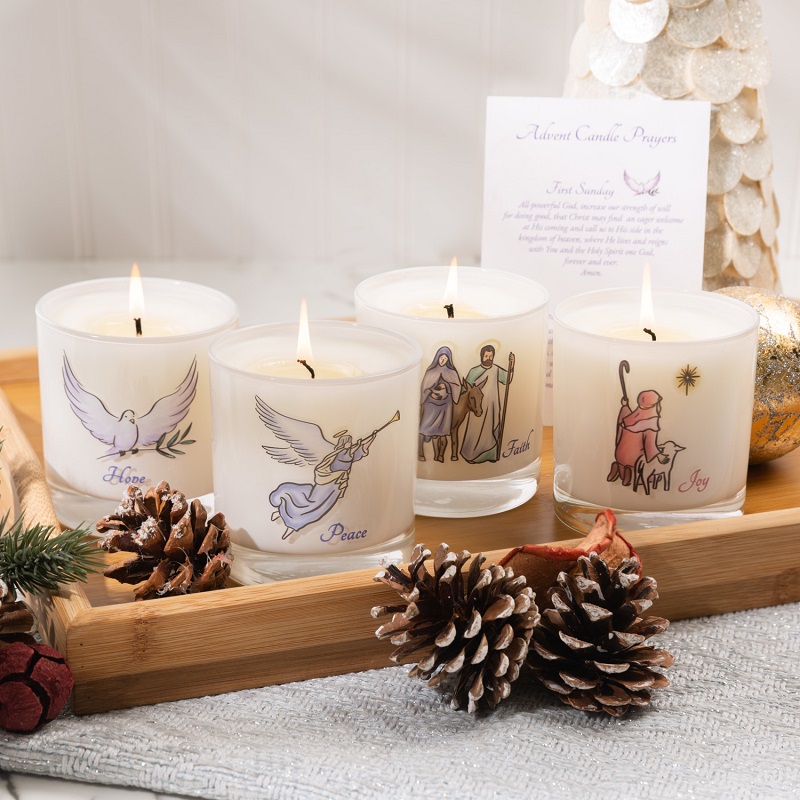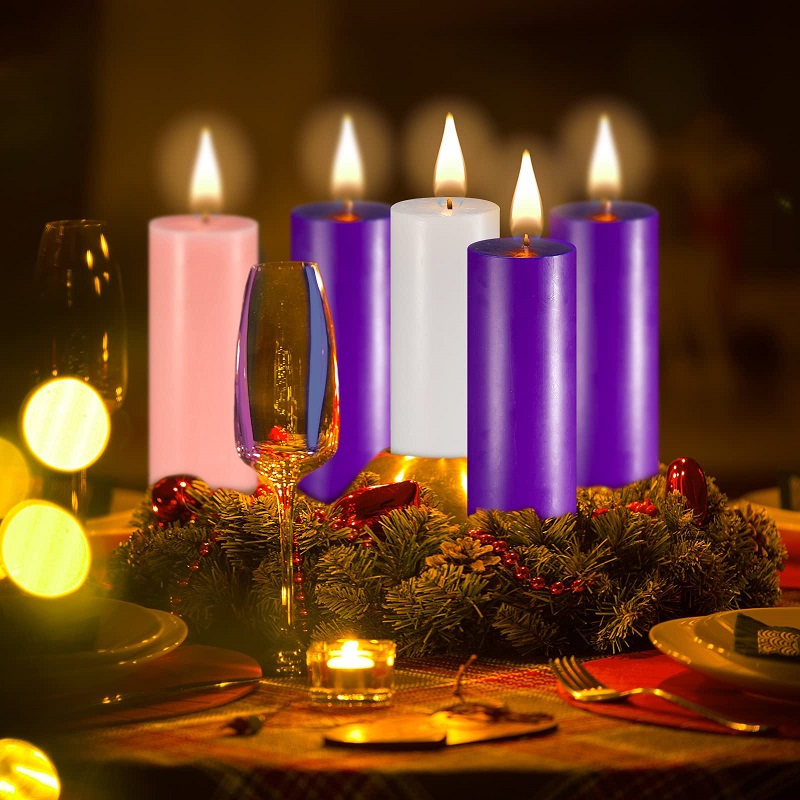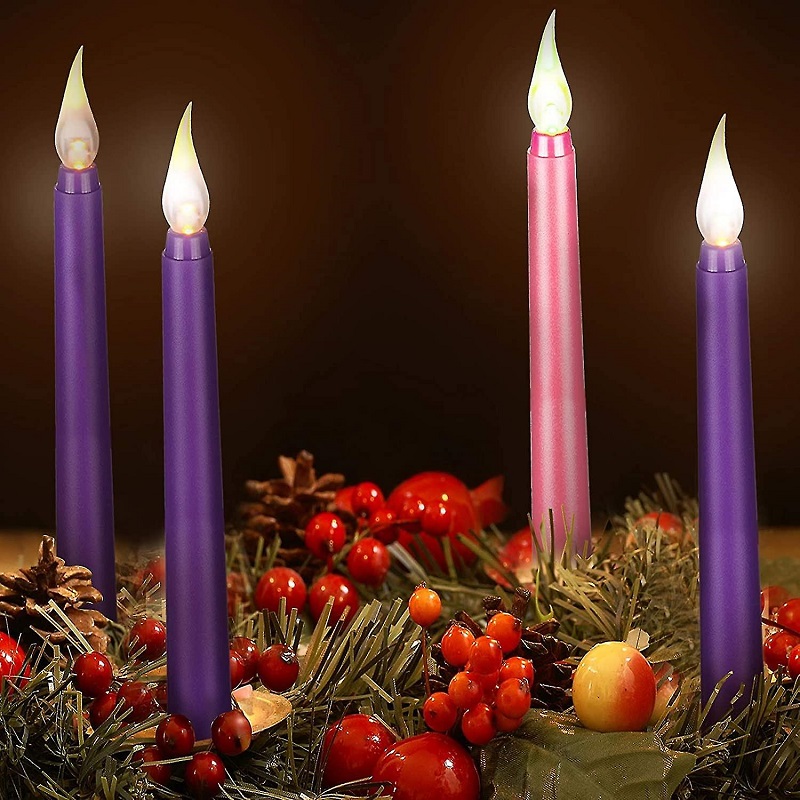The Season of Advent: Anticipation and Celebration
The Advent season is a time filled with anticipation and celebration. It marks a period of preparing for the birth of Jesus Christ. During Advent, many observe various rituals and traditions to focus their hearts and minds on the true meaning of Christmas, eg Advent Candles. This is a season not just about waiting, but actively preparing and making room for the joy and transformation that the birth of Christ brings.
Christians across the world engage in Advent as a sacred time to reflect, pray, and await the fulfillment of God’s promise. It’s a period where hope thrives, and the spirit of expectation is alive. With each passing week of Advent, the anticipation grows, as does the excitement for the upcoming celebrations of Jesus’ arrival.
Families and congregations light Advent candles, with each candle holding a special significance, reflecting key themes of hope, peace, joy, and love. These themes are universal and the Advent candles serve as a visual reminder of the spiritual journey towards Christmas Day. The act of lighting these candles is a meaningful tradition, representing the light of Christ penetrating the darkness of our world.

History and Origin of the Advent Wreath
The history of the Advent wreath takes us back to ancient times. It began in the cold winter days in Europe. During this time, people looked for signs of spring and lighter days. The wreath’s round shape symbolized the cycle of seasons. It meant hope and eternity. Christians later adopted the wreath as a sign of waiting for Christ’s birth.
The modern Advent wreath started in the 19th century. A German pastor named Johann Hinrich Wichern is often credited with this. He used a large wagon wheel to make the first Advent wreath. He lit a small candle for each weekday and a larger one on Sundays. This helped count down the days until Christmas. The idea spread quickly among German Lutherans and later, Christians worldwide.
Significance of the Advent Wreath and Evergreens
The Advent wreath is rich in symbolism. Its shape is a circle, showing God’s endless love and eternal life. This symbol is timeless. It reminds us of God’s love, which has no beginning or end. Evergreens make up the wreath, standing for continuous life. They are always green, even in winter’s depth. This resilience reflects our hope in Christ. Christ offers eternal life, a promise of renewal and perpetuity.
Evergreens also point to Jesus’s offer of new life. They symbolize our own spiritual resilience. Like evergreens do in winter, we can thrive in hard times through Jesus’s strength. The scent of evergreens brings minds to life. It evokes a sense of ongoing vitality.
When we see the Advent wreath, we are reminded of all this. It serves as a visual sermon. The evergreens, together with the candles, guide us through Advent. They light up each week, marking progress toward Christmas. The Advent wreath is more than decoration. It is a sacred symbol. It unites us in anticipation of Christmas, Christ’s birth, and His return.

The Symbolism of Advent Candle Colors
The Advent candle colors are deep in meaning. Each shade represents a facet of our faith during the Advent season. They echo the themes of hope, peace, joy, and love. As we light each candle, the colors remind us of the virtues that Christ brings into our world.
First Sunday of Advent: The Candle of Hope
The first candle is typically purple, symbolizing hope. It’s also known as the Prophet’s Candle. This candle reflects the promises foretold about Christ’s coming. It signals the start of our anticipatory journey toward Christmas. Its purple tone stands for penance, preparation, and royalty, urging us to ready ourselves for the King of Kings.
Second Sunday of Advent: The Candle of Peace
A second purple candle joins the first on the second Sunday. It points to peace and is often termed the Bethlehem Candle. It prompts us to think of Mary and Joseph’s journey. This candle encourages us to find peace in Christ’s arrival, a peace that calms our hearts amidst the bustle of the season.
Third Sunday of Advent: The Candle of Joy
The third candle differs in color—it’s pink or rose. Known as the Shepherd’s Candle, it signifies joy. This burst of joy comes with the nearing of Christmas. It symbolizes the gladness shepherds felt as angels announced Jesus’ birth. Its unique color is a visual cue to rejoice.
Fourth Sunday of Advent: The Candle of Love
Lastly, a third purple candle, the Candle of Love, is lit. Also called the Angel’s Candle, it speaks of love. It reflects on the angels’ message of goodwill to all. As we light this candle, we remember God’s immense love that led to Jesus’ birth. It prepares our hearts for celebrating the fullness of God’s love on Christmas.
In some traditions, a fifth white candle sits at the center. Lit on Christmas Day, it’s called the Christ Candle. It stands for Jesus Himself, the pure heart of the Advent journey. Each candle color carries rich significance, adding layers to our Advent reflections. As we light each one, they draw us into a deeper understanding of the season’s profound themes.
First Sunday of Advent: The Candle of Hope
The first Advent candle holds a promise. It’s a symbol of hope, lighting the way in darkness. Often purple, this candle is known as the Prophet’s Candle, echoing the voices from long ago. Prophets like Isaiah spoke of a coming Messiah. The purple hue reflects royalty, reminding us to prepare for the King.
Lighting this candle, we engage in a tradition of hope. We recall the ancient prophecies that Christ fulfills. With every flicker, it whispers of a hope that is not just for the past, but also for today and for the future. And as families gather to kindle this flame, they read Scriptures of hope—words promising the Savior’s birth, like Isaiah 9:2-7. They recite prayers, asking for the hope of Christ to dwell richly in their lives.

Second Sunday of Advent: The Candle of Peace
On the second Sunday of Advent, we light the Candle of Peace. This purple candle, also known as the Bethlehem Candle, reminds us of Mary and Joseph’s journey to Bethlehem. It invites us to find calm and serenity during the busy holiday season. Through this candle, we recall the peace Jesus Christ brings into the world.
The Candle of Peace encourages us to pause and reflect. It stands for the harmony and quietness that comes with Christ’s arrival. Lighting it, we remember God’s promise of peace on Earth. This peace isn’t just about quiet moments. It’s about inner calm and reconciliation with God and others.
We can use this time to think about ways we can be peacemakers. In our families, communities, and hearts, we can spread the tranquility the Candle of Peace represents. Reading scriptures that focus on peace, like Isaiah 9:6 and Luke 2:14, enriches this moment. These words from the Bible inspire us to carry peace within us.
Third Sunday of Advent: The Candle of Joy
On the third Advent Sunday, joy fills the air. We light the pink or rose-colored candle, often called the Shepherd’s Candle. This different hue brings excitement, a visual hint of celebration. It points to the joy filling the shepherds’ hearts, as angels announced Jesus’ birth.
The Joy Candle, with its unique color, marks a delightful turn in Advent. It’s a reminder to rejoice, as Christmas draws closer. The candle’s glow symbolizes the joy that Jesus’ coming brings to the world. As it illuminates, it invites us to feel joy in our lives and in preparing for the holy day.
During this candle lighting, families might read Bible verses that spotlight joy. Scriptures such as Luke 2:10-11 tell of the angelic proclamation of Jesus’ birth. Prayers may be said, thanking God for the joy found in Christ and sharing it with others.
Fourth Sunday of Advent: The Candle of Love
The Candle of Love shines on the fourth Advent Sunday. Often purple, it stands for love. We call it the Angel’s Candle, showing love God and the angels shared. It urges us to share love and kindness. Lighting this candle, we get ready to greet Jesus’s birth with love. It’s a powerful sign, urging us to love one another.
This candle reflects on the angels’ message of peace and goodwill (Luke 2:14). As we light this candle, we feel God’s love. It’s God’s love that brought Jesus into our world. This act of lighting the candle prepares our hearts for the joy of Christmas.
While lighting the Candle of Love, we read Bible verses about love. For instance, verses like John 3:16-17 remind us of God’s great love. They call us to love each other, following Jesus’s example. A common prayer might be, ‘Lord, fill our hearts with Your love this Christmas. Amen.’ Each candle’s light brings us nearer to the full love story of Christmas.
The Christ Candle: The Center of the Advent Wreath
At the heart of the Advent wreath sits the Christ Candle. This candle is unique. It’s white and stands at the center of the wreath. We light it on Christmas Day. It symbolizes purity, the light of Christ entering the world.
The white color of the Christ Candle is meaningful. It shows the sinless nature of Jesus. It represents the pure love of God sent to us. Lighting this candle is a special moment. It marks the end of Advent and the celebration of Jesus’ birth.
The Christ Candle is a beacon of renewal and new beginnings. As it shines, we are reminded of Jesus as the true light of the world. Through Him, we find hope, peace, joy, and love. It’s a light that darkness cannot overcome.
Lighting this candle invites us to set aside the busyness of the season. We focus on the true meaning of Christmas. It’s a time to invite Jesus into the center of our lives.
Traditions and Practices: Lighting the Advent Candles
The ritual of lighting Advent candles is a cherished tradition. Each Sunday leading to Christmas, families and congregations light a new candle. This practice involves everyone, from children to elders, and serves as a shared experience of faith. As each candle ignites, so does a discussion about the candle’s theme.
- First Sunday: Light the first advent candles of hope, and read related scriptures of promise and anticipation. Prayers focus on hopefulness for the present and future.
- Second Sunday: Light the second advent candles to symbolize peace. Scriptures and prayers regarding peace with God and others are shared.
- Third Sunday: Light the pink or rose joy candle. This day stands for joy and is often marked with lively songs and readings.
- Fourth Sunday: Light the love candle to symbolize God’s love sent through Jesus, coupled with reflections on love.
Reflection and Prayer: Embracing the Themes of Advent
As we navigate the Advent season, reflection and prayer are central to embracing its themes. Each candle on the Advent wreath offers us a chance to delve deeper into our faith and prepare our hearts for the joy of Christmas. The process of lighting the candles combined with prayer helps us to focus on the spiritual journey of Advent, inviting us into a state of contemplation and anticipation.
- Hope: Lighting the first candle, we might pray, ‘Lord, fill us with hope as we wait for your coming.’
- Peace: Upon lighting the second candle, a prayer could be, ‘God of peace, guide us to live in your harmony.’
- Joy: The third candle invites a joyful prayer like, ‘Fill our hearts with the joy of your presence, O God.’
- Love: With the fourth candle, we may ask, ‘Teach us to love as you love us, dear Lord.’


